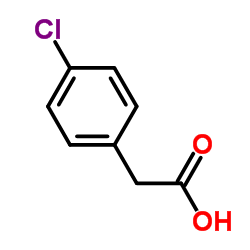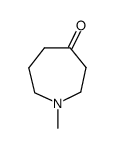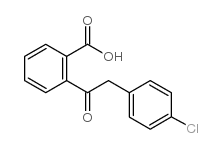Azelastine

Azelastine structure
|
Common Name | Azelastine | ||
|---|---|---|---|---|
| CAS Number | 58581-89-8 | Molecular Weight | 381.898 | |
| Density | 1.3±0.1 g/cm3 | Boiling Point | 533.9±60.0 °C at 760 mmHg | |
| Molecular Formula | C22H24ClN3O | Melting Point | N/A | |
| MSDS | N/A | Flash Point | 276.7±32.9 °C | |
Use of AzelastineAzelastine is a potent, second-generation, selective, histamine antagonist.Target: Histamine ReceptorAzelastine is a selective H(1)-receptor antagonist that inhibits histamine release and interferes with activation of several other mediators of allergic inflammation. Azelastine can inhibit CHMCs activation and release of IL-6, tryptase, and histamine. On an equimolar basis, azelastine was a more potent inhibitor than olopatadine [1]. Topical azelastine progressively improved itching and conjunctival redness in PAC patients compared to placebo and was at least as effective as levocabastine. Rapid relief is consistent with H(1)-receptor antagonist action, while continued improvement up to 6 weeks may be consistent with mechanisms involving other mediators of allergic inflammation [2]. Azelastine nasal spray was reported to control all rhinitis symptoms, including nasal congestion, regardless of rhinitis diagnosis during the 2-week study period. Patients with seasonal allergic rhinitis and patients with seasonal allergic rhinitis plus nonallergic triggers were identified as patient types most likely to respond to azelastine nasal spray [3]. |
| Name | azelastine |
|---|---|
| Synonym | More Synonyms |
| Description | Azelastine is a potent, second-generation, selective, histamine antagonist.Target: Histamine ReceptorAzelastine is a selective H(1)-receptor antagonist that inhibits histamine release and interferes with activation of several other mediators of allergic inflammation. Azelastine can inhibit CHMCs activation and release of IL-6, tryptase, and histamine. On an equimolar basis, azelastine was a more potent inhibitor than olopatadine [1]. Topical azelastine progressively improved itching and conjunctival redness in PAC patients compared to placebo and was at least as effective as levocabastine. Rapid relief is consistent with H(1)-receptor antagonist action, while continued improvement up to 6 weeks may be consistent with mechanisms involving other mediators of allergic inflammation [2]. Azelastine nasal spray was reported to control all rhinitis symptoms, including nasal congestion, regardless of rhinitis diagnosis during the 2-week study period. Patients with seasonal allergic rhinitis and patients with seasonal allergic rhinitis plus nonallergic triggers were identified as patient types most likely to respond to azelastine nasal spray [3]. |
|---|---|
| Related Catalog | |
| References |
| Density | 1.3±0.1 g/cm3 |
|---|---|
| Boiling Point | 533.9±60.0 °C at 760 mmHg |
| Molecular Formula | C22H24ClN3O |
| Molecular Weight | 381.898 |
| Flash Point | 276.7±32.9 °C |
| Exact Mass | 381.160797 |
| PSA | 38.13000 |
| LogP | 3.71 |
| Vapour Pressure | 0.0±1.4 mmHg at 25°C |
| Index of Refraction | 1.642 |
| Storage condition | 2-8℃ |
CHEMICAL IDENTIFICATION
HEALTH HAZARD DATAACUTE TOXICITY DATA
|
| Hazard Codes | N-T,N,T |
|---|---|
| Risk Phrases | R50/53:Very Toxic to aquatic organisms, may cause long-term adverse effects in the aquatic environment . R23/25:Toxic by inhalation and if swallowed . |
| Safety Phrases | S61-S60-S45-S28A-S20/21-S28 |
| RIDADR | 1557 |
| RTECS | CY5950000 |
| Packaging Group | III |
| Hazard Class | 6.1(b) |
| HS Code | 2933990090 |
|
~% 
Azelastine CAS#:58581-89-8 |
| Literature: Archiv der Pharmazie, , vol. 321, # 4 p. 205 - 208 |
|
~% 
Azelastine CAS#:58581-89-8 |
| Literature: Archiv der Pharmazie, , vol. 321, # 4 p. 205 - 208 |
|
~% 
Azelastine CAS#:58581-89-8 |
| Literature: Archiv der Pharmazie, , vol. 321, # 4 p. 205 - 208 |
|
~% 
Azelastine CAS#:58581-89-8 |
| Literature: Archiv der Pharmazie, , vol. 321, # 4 p. 205 - 208 |
|
~% 
Azelastine CAS#:58581-89-8 |
| Literature: Archiv der Pharmazie, , vol. 321, # 4 p. 205 - 208 |
| HS Code | 2933990090 |
|---|---|
| Summary | 2933990090. heterocyclic compounds with nitrogen hetero-atom(s) only. VAT:17.0%. Tax rebate rate:13.0%. . MFN tariff:6.5%. General tariff:20.0% |
| UNII:ZQI909440X |
| 4-(4-Chlorobenzyl)-2-(1-methyl-4-azepanyl)-1(2H)-phthalazinone |
| 1(2H)-Phthalazinone, 4-[(4-chlorophenyl)methyl]-2-(hexahydro-1-methyl-1H-azepin-4-yl)- |
| Optilast |
| 4-(p-Chlorobenzyl)-2-(N-methylperhydroazepin-4-yl)-1(2H)-phthalazinone |
| Allergodil |
| 4-[(4-chlorophenyl)methyl]-2-(1-methylazepan-4-yl)phthalazin-1(2H)-one |
| Azelastine |
| 4-[(4-Chlorophenyl)methyl]-2-(hexahydro-1-methyl-1H-azepin-4-yl)-1(2H)-phthalazinone |
| 4-(4-Chlorobenzyl)-2-(1-methylazepan-4-yl)phthalazin-1(2H)-one |
| Rhinolast |
| MFCD00242781 |
| 4-(p-Chlorobenzyl)-2-(hexahydro-1-methyl-1H-azepin-4-yl)-1(2H)-phthalazinone |




